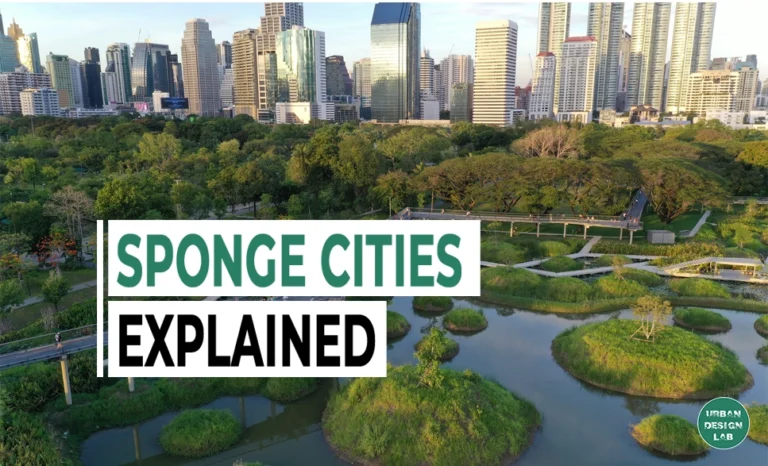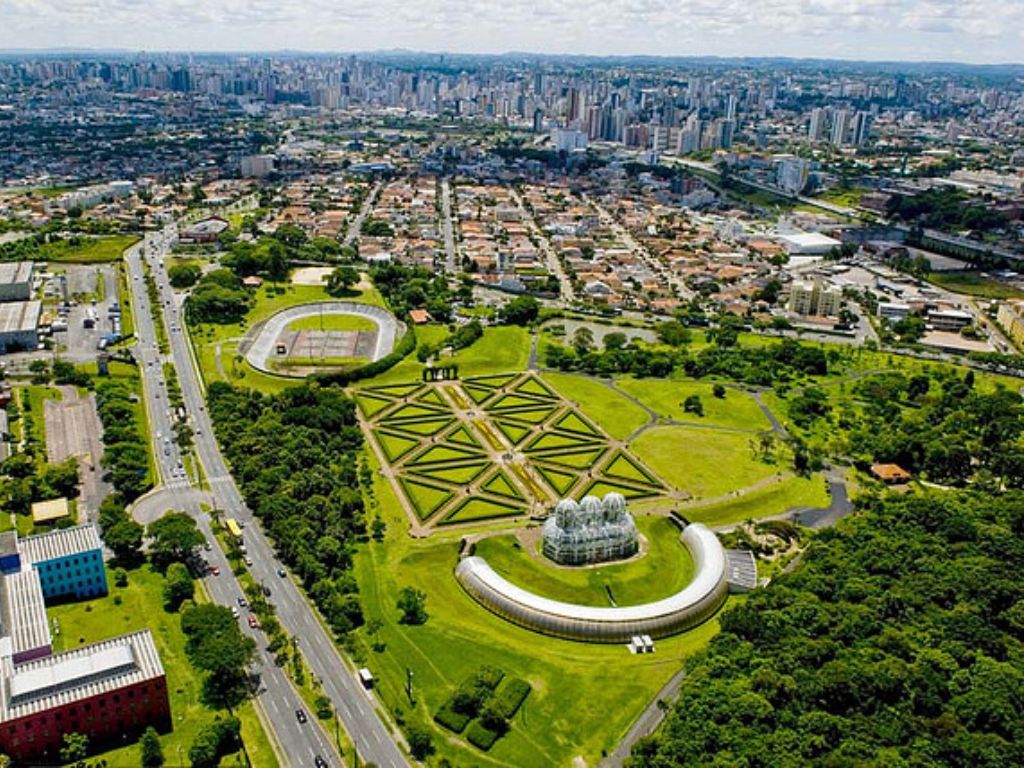
Biomimetic Urban Design

Biomimetic urban design regards the power of nature in developing cities as a way to ensure sustainable responses to the ever-growing challenges of cities. Pressured by environmental concern and a rise in population, cities will face struggles dealing with resource depletion, pollution, and energy inefficiency. By considering various natural systems, like how forests manage and balance their ecosystems, urban planners can create organic and adaptive spaces. Biomimetic design rethinks the relations between cities and nature by developing them to be resilient, efficient, and in tune with natural processes. The process contributes a guiding framework toward constructing future cities that are far more sustainable and ecologically integrated.
Learning from Nature: The Principles of Biomimicry
Biominic urban design is the principle of using nature to address the challenges faced by cities through focus on sustainability, efficiency, and resilience. Architects apply inspiration from natural systems in four ways:
- Process: Mimicking natural processes like photosynthesis or self-healing to develop sustainable construction methods.
- Performance: To perform like functions in nature, for example, mangrove filtration, to make buildings more efficient.
- Geometry: Taking natural forms, such as tree branches, to optimize the structure.
- Material: Creating bio-inspired materials like spider silk or bamboo for stronger, eco-friendly buildings.
This holistic approach creates harmony between cities and nature by providing long-term, flexible solutions to urban problems.

Architecture inspired by nature
Biomimicry architecture is an innovative design practice in which inspiration from patterns, strategies, and forms in nature helps develop a human-made structure in a sustainable and resourceful manner. This involves the study of biological systems, processes, and functions that help in solving the architectural challenges concerning more resilient, energy-efficient, and ecologically harmonious built environments.
Moving beyond mere aesthetic considerations, biomimetic design tackles pressing environmental issues such as energy efficiency, waste management, and carbon emissions. This philosophy encourages buildings to work in harmony with their surroundings rather than disrupt them, seamlessly integrating elements like water, natural light, and ventilation into the architecture.
These “living buildings” not only minimize environmental impact but also promote healthier and more comfortable spaces for their occupants. By prioritizing ecological principles, biomimetic architecture creates environments that support both human well-being and the planet’s health, setting a new standard for sustainable design in the built environment.

Sustainability in Biomimetic Urban Design
In sustainability issues, biomimicry offers a powerful approach to urban design by emulating nature’s resource conservation and efficiency strategies, encouraging self-sufficiency.
Biomimicry enhances sustainability by using eco-friendly materials. Designs for buildings or infrastructure based on these principles minimize energy consumption, reducing impacts on the environment. As regulations and consumers increasingly make sustainability a priority, biomimicry adaptation will provide a designer’s competitive advantage.
Biomimicry inclusion in design involves several stages:
- Conceptualization: where designers draw inspiration from nature’s strategies
- Choosing materials: eco-friendly materials should be used, like biodegradable polymers
- Design development: nature-inspired systems are integrated in order to optimize performances
- Construction: techniques are used such as modular assembly that reduces waste.

The Eden Project, Cornwall, UK
The Eden Project is an example of modern innovation and sustainability in construction. Designed by architect Nicholas Grimshaw, this biome complex has a uniqueness due to the huge geodesic domes that house various ecosystems, such as a tropical and a Mediterranean biome.
These are buildings whose shapes are inspired by soap bubbles and cellular design. They use a light-resistant material known as EFTE. This material not only allows for high light transmission, but also controls the internal temperature, thus providing favorable conditions for plant growth in various climates.
What makes the Eden Project more exciting is how certain climates of the world can be emulated within a controlled space, putting the principles of nature into practice. Its biomimetic design blends well with the natural landscape and speaks of a commitment to energy efficiency and environmental conservation. In addition to serving as a center for education and conservation, the Eden Project opens its doors to show visitors a way to explore and understand biodiversity and sustainability issues in the contemporary world.

One Ocean Pavilion, Yeosu, South Korea
Among the most notable works of biomimetic design is the One Ocean Pavilion in Yeosu, South Korea. Its fluid form was created for Expo 2012, inspired by ocean waves and coral life, offering a distinctive and immersive aesthetic. It is not only a beautiful pavilion, but by using natural ventilation, it incorporates natural sustainability into its structure with recyclable materials that can maximize energy efficiency.
The pavilion represents the association of humans with the ocean, showing the need to care for our marine resources. It contemplates the movement of the waves and reflects an important space for conservation and respect for the environment. Its innovative design follows the principles of sustainability and shows, in a visionary way, how architecture can be integrated with the natural environment in harmony. In form and function, this pavilion seeks to inspire visitors to act for the future of the oceans and biodiversity.

The Importance of Biomimetic Design in Urban
Biomimetic design plays an important role in the future of urban space, holding new solutions for pending issues that cities are facing today. Cities can achieve more with sustainability through energy efficiency, resource conservation, and waste reduction by emulating nature’s time-tested strategies. For instance, biomimicry encourages people to make use of eco-friendly materials, self-sufficient systems that would be typical of the ecosystem, much as creating an urban ecosystem that thrives with nature.
Besides, biomimetic principles develop resilience to climatic changes by helping cities adapt to environmental variations. This not only enhances the quality of urban living but also promotes public health through the development of greener, more livable spaces. Since sustainability is now a priority within communities, biomimicry will enable architects and planners within the urban design to develop functionally and aesthetically pleasing yet environmentally responsible spaces. Biomimetic design will finally allow the future city to integrate with nature in harmony and make the urban landscape sustainable and dynamic long into the future.

Conclusion
Biomimetic urban design is the approach to creating sustainable and resilient cities in tune with nature. The efficiency and adaptability of natural systems drive urban designers to devise novel solutions to various pressing environmental challenges, improve resource efficiency, and strive for better quality urban living. Biomimicry imagines the functionality, aesthetics, and symbiotic coexistence of buildings with nature for the future; and it does so as cities continue to grow and grapple with the challenges brought on by climate change.
References
- Aithal, H. (2022, January 31). What is biomimetic architecture and why young architects should know about it. RTF | Rethinking the Future. https://www.re-thinkingthefuture.com/rtf-fresh-perspectives/a539-what-is-biomimetic-architecture-and-why-young-architects-should-know-about-it/#google_vignette
- AlAli, M., Mattar, Y., Alzaim, M., & Beheiry, S. (2023). Applications of biomimicry in architecture, construction and civil engineering. Biomimetics, 8(2), 202. https://doi.org/10.3390/biomimetics8020202
- Filipeboni. (2023, August 9). Biomimicry for sustainable design: A game-changer for architects, interior designers, and construction companies. UGREEN. https://ugreen.io/biomimicry-for-sustainable-design-a-game-changer-for-architects-interior-designers-and-construction-companies/
- Jenks. (2024, February 7). Lessons from nature: Biomimicry in wastewater treatment. Green.org. https://green.org/2024/01/30/lessons-from-nature-biomimicry-in-wastewater-treatment/
- Martínez, E. (2024, March 6). Biomimetic materials, what are they? – ATRIA Innovation. ATRIA Innovation. https://atriainnovation.com/en/blog/biomimetic-materials-what-are-they/
- Raimondi, M. B. (2023, January 7). Biomimetic design: What is it and what benefits does it bring to sustainable architecture? Ekohunters. https://www.ekohunters.com/biomimetic-design-architecture/?srsltid=AfmBOoplkvFlIYJ1Ip2AHOxPboSmEEbP9sbf25Pu1PYgZLW6o3D9APSj
- Team, S. (2022, January 26). Biomimicry: Explore buildings that are shaped like trees. The Spaces. https://thespaces.com/biomimicry-explore-buildings-that-are-shaped-like-trees/

Celeste Barragan
About the Author
Emerging Urban Planner of Mexico City holds a bachelor’s degree in urban planning from the Metropolitan Autonomous University. He is passionate about mobility, functional urban design and sustainability. Enthusiast of illustration and music, he seeks to innovate urban practices to improve life in cities.


Related articles




How the High Line Transformed Public Space in New York City?

Sponge Cities Explained
UDL Illustrator
Masterclass
Visualizing Urban and Architecture Diagrams
Session Dates
15th-16th November 2025

Urban Design Lab
Be the part of our Network
Stay updated on workshops, design tools, and calls for collaboration
Curating the best graduate thesis project globally!

Free E-Book
From thesis to Portfolio
A Guide to Convert Academic Work into a Professional Portfolio”
Recent Posts
- Article Posted:
- Article Posted:
- Article Posted:
- Article Posted:
- Article Posted:
- Article Posted:
- Article Posted:
- Article Posted:
- Article Posted:
- Article Posted:
- Article Posted:
- Article Posted:
- Article Posted:
- Article Posted:
Sign up for our Newsletter
“Let’s explore the new avenues of Urban environment together “











































One Comment